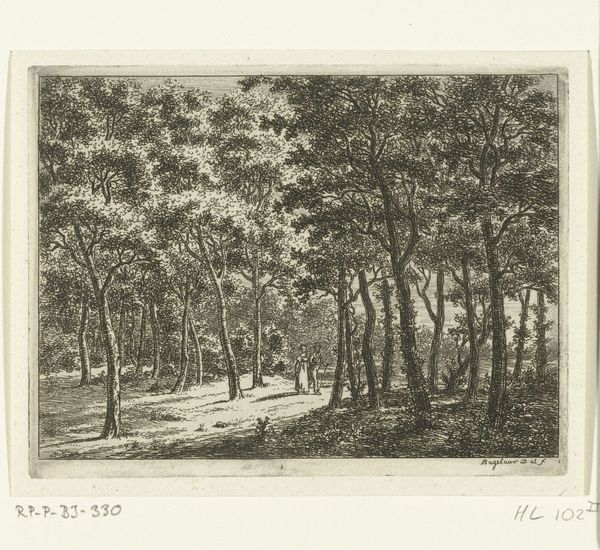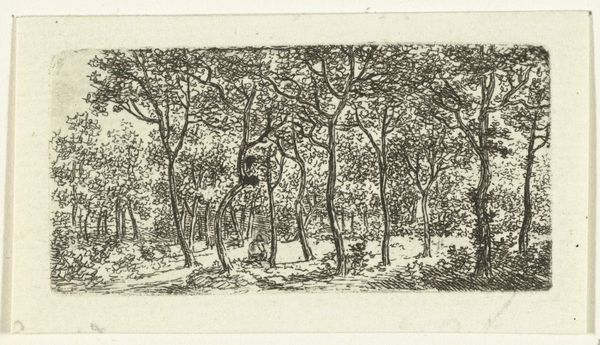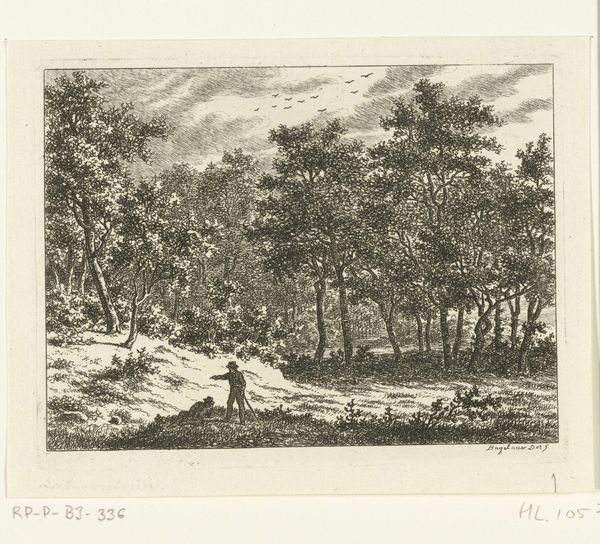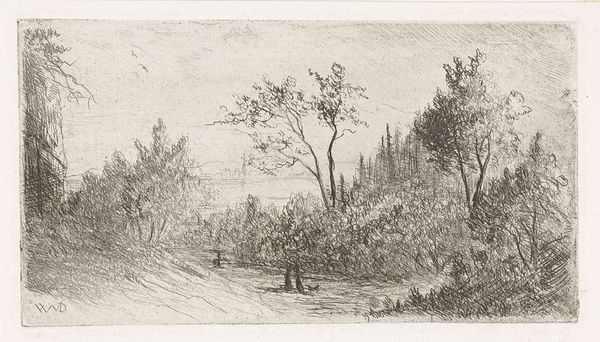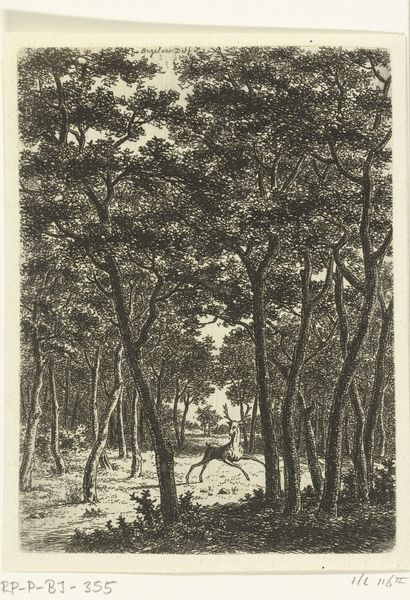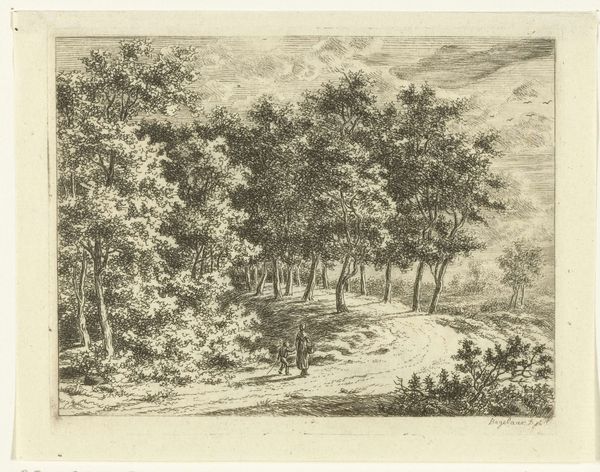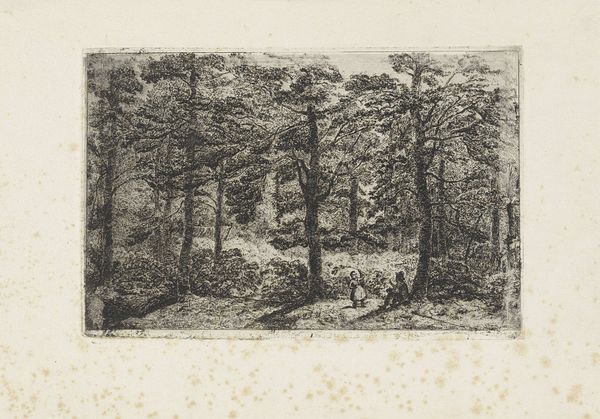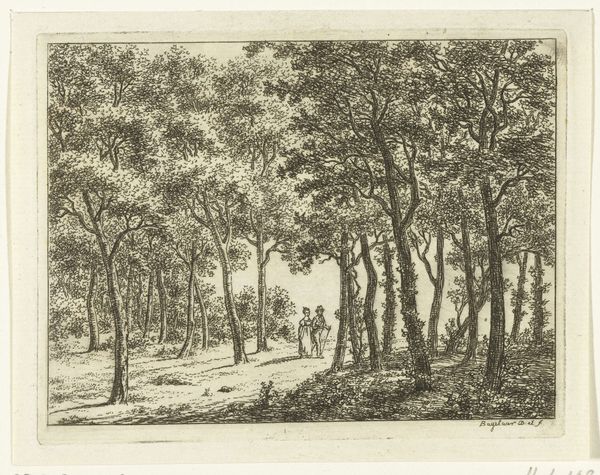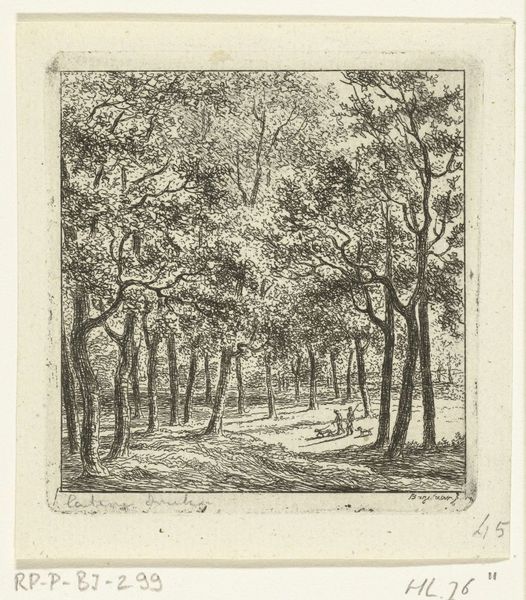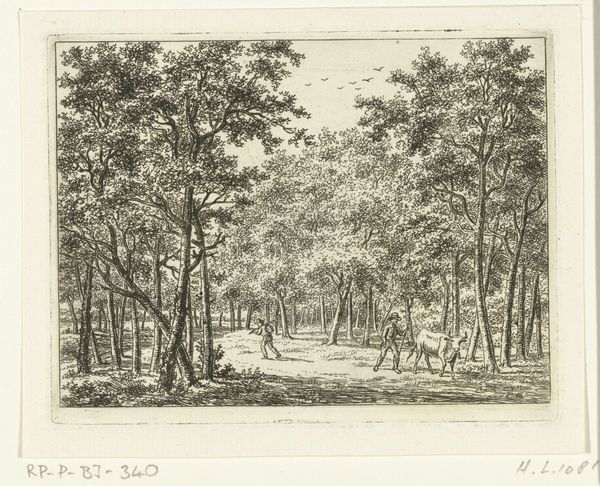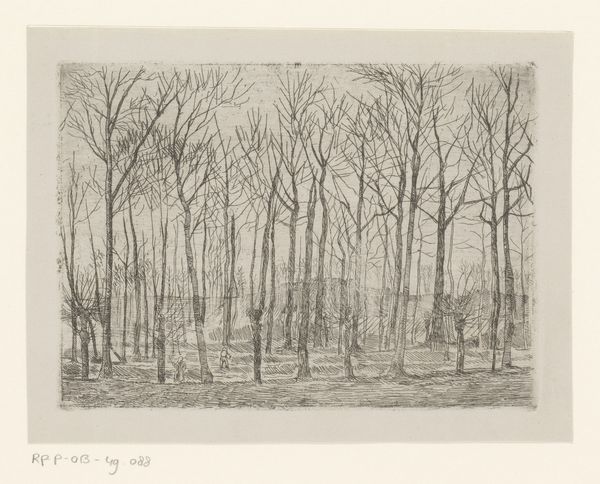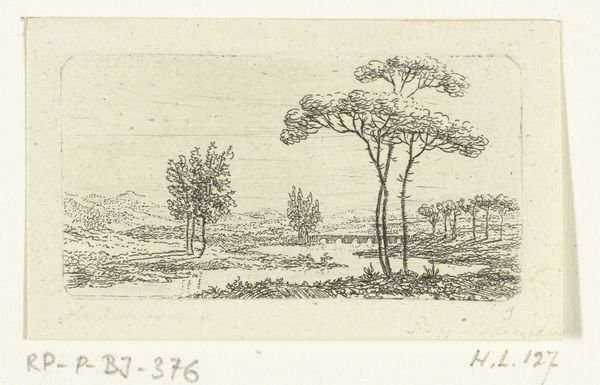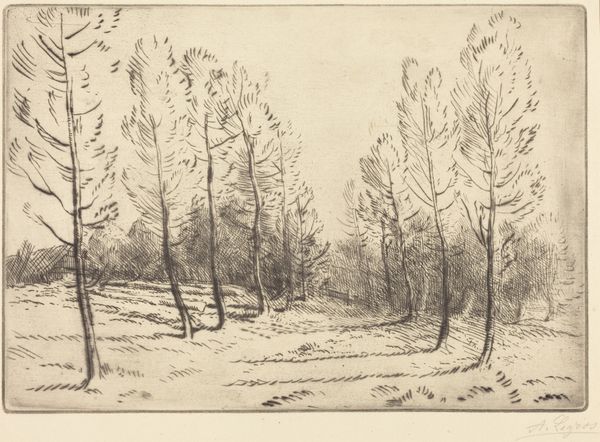
print, etching
# print
#
etching
#
landscape
#
personal sketchbook
#
forest
#
romanticism
#
line
#
realism
Dimensions: height 32 mm, width 64 mm
Copyright: Rijks Museum: Open Domain
This tiny landscape, 'Bosgezicht met zittende man', was made by Ernst Willem Jan Bagelaar, likely in the early 19th century, through a process called etching. The artwork shows a tranquil forest scene with a seated man, rendered with intricate lines etched into a metal plate. To achieve this level of detail, Bagelaar would have coated a metal plate with a waxy substance, then carefully scratched away lines to expose the metal. The plate was then submerged in acid, which bit into the exposed lines, creating grooves. Ink was applied, filling these grooves, and the plate pressed onto paper, transferring the image. The quality of line achievable through etching allowed Bagelaar to capture the textures of leaves and bark. The labour-intensive nature of etching meant that prints like this were often luxury items, consumed by a wealthy and educated audience with an appreciation for both art and the natural world. Ultimately, looking closely at the materiality and means of production, reveals much about its social and cultural context.
Comments
No comments
Be the first to comment and join the conversation on the ultimate creative platform.
